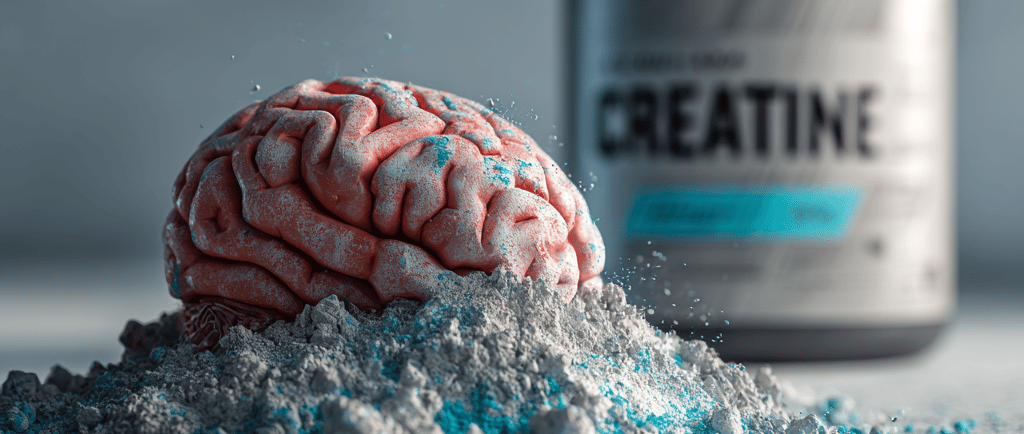Join our November patient group - secure your spot today!
Creatine 101: What It Is, How It Works, and How to Use It
Evidence-based guide to creatine: what it is, how it works & safety, who benefits, and daily dosing guidance for strength, muscle growth, and healthy aging.
INTERESTING FACTSSUPPLEMENTS
Kelly Buerger DO
11/5/20255 min read


Creatine 101: What it is, how it works, who benefits, and how to use it
Creatine isn’t just for bodybuilders. It’s a simple compound your body already makes and stores in muscle and brain tissue. Supplementing can raise those stores, support higher-quality training, and may help preserve muscle across the lifespan. Here’s a clear, evidence-based guide.
What is creatine?
Creatine is a nitrogen-containing compound that’s stored as phosphocreatine in muscle and brain. It helps recycle cellular energy (ATP) during brief, intense efforts. You make about 1–2 grams per day and get ~1 gram from foods like meat and fish, but typical diets do not fully saturate muscle stores. Supplemental creatine, especially creatine monohydrate, reliably raises intramuscular creatine and is the research standard for safety and efficacy ISSN position stand, 2017 and ISSN update, 2025. For general background, see the NIH Office of Dietary Supplements fact sheet for professionals (creatine section) NIH ODS.
How does it work?
During short bursts, think heavy sets, sprints, jumps. ATP demand outpaces production. Phosphocreatine donates a phosphate to regenerate ATP fast, letting you sustain more reps or power before fatigue ISSN, 2017. Over weeks, that translates into more training volume and small but meaningful improvements in strength and lean mass. Creatine also draws water into muscle cells (cell hydration) and may influence gene signaling involved in growth and recovery ISSN, 2017. In the brain, phosphocreatine buffers energy, which is one reason cognitive studies are ongoing Frontiers meta-analysis, 2024.
What are the proven benefits?
Strength and power. Meta-analyses show creatine plus resistance training increases maximal strength more than training alone. One 2024 meta-analysis reported ~4.4 kg greater upper-body and ~11.3 kg greater lower-body 1RM gains vs placebo Nutrients, 2024. Findings align with prior reviews and the ISSN position stands ISSN 2017, ISSN 2025.
· Lean mass. With structured training, creatine modestly increases lean body mass; part of the early change is intracellular water, but longer-term gains track with strength Nutrients, 2025 RCT.
· Older adults. Creatine combined with resistance training helps counter age-related loss of strength and muscle. Reviews and meta-analyses in aging populations support small-to-moderate improvements in function and strength Forbes meta-analysis, 2021; Frontiers review, 2024; Candow review, 2025.
· Cognition. Evidence is mixed. A 2024 meta-analysis reports small benefits in certain domains (memory, processing speed) but heterogeneous methods and modest sample sizes warrant caution Frontiers meta-analysis, 2024. A 2025 systematic review in older adults leans positive but highlights variable study quality Nutrition Reviews, 2025.
· Who responds most? Vegetarians and vegans often have lower baseline muscle creatine and may see larger increases in intramuscular creatine and performance after supplementing Systematic review, 2020 and newer data in plant-based participants Journal Physiology, 2025.
Is creatine safe?
Across decades of trials, creatine monohydrate is well tolerated in healthy adults with no consistent signal of renal, hepatic, or cardiovascular harm at recommended doses. The 2017 ISSN position stand and 2025 update both support safety with long-term use in healthy populations ISSN 2017; ISSN 2025. A 2025 analysis concluded adverse events are generally mild and not clinically significant J Int Soc Sports Nutr, 2025. A 2024 Mendelian randomization study found no genetic evidence that higher creatine levels impair renal function Nutrients, 2024.
· Kidney “myths.” Serum creatinine can rise slightly after creatine because creatine naturally converts to creatinine; that lab change doesn’t equal kidney injury. Reviews summarize this and recommend interpreting eGFR in context JISSN Q&A, 2021; Lab medicine review, 2018.
· Use caution if you have known kidney disease, are pregnant, or are taking nephroactive drugs; discuss supplementation with your clinician first NIH ODS.
How to use creatine
Choose creatine monohydrate. It has the strongest evidence base and is cost-effective. Look for third-party testing. Creatine HCL is a newer form and is reportedly more bioavailable, but more data is needed.
Dosing options.
Loading: 20 g/day split into 4 doses for 5–7 days, then 3–5 g/day to maintain. This saturates stores faster Timing/dose review, 2016.
No loading: Take 3–5 g/day; full effects arrive in ~3–4 weeks as stores gradually rise. The U.S. DoD’s Operation Supplement Safety notes as little as 3 g/day is safe and effective for raising muscle creatine OPSS, 2025.
Timing. Consistency beats timing. Taking creatine with a meal or post-training is practical and may aid uptake via insulin-mediated transport, but the main driver is daily adherence Frontiers timing review, 2022.
Hydration and GI comfort. Minor bloating or loose stools usually resolve by splitting doses and taking with food and fluids ISSN, 2017.
Caffeine? They can coexist. Evidence is inconsistent on any interference; prioritize what helps you train well ISSN, 2017.
Who should consider creatine?
Adults doing resistance or high-intensity training who want higher quality sessions and gradual strength and lean-mass gains Nutrients, 2024.
Adults 50+ adding or maintaining muscle as part of healthy aging, ideally paired with progressive strength training Forbes, 2021; Frontiers, 2024.
Vegetarians or vegans, who often start with lower intramuscular creatine and may respond more Systematic review, 2020.
Actionable takeaways
Buy creatine monohydrate from a third-party tested brand. Powders are the value choice.
Dose 3–5 g/day. Load 20 g/day for 5–7 days if you want faster saturation.
Take it daily with a meal or after training. Consistency matters most.
Expect small weight gain early from muscle water. Strength and work capacity change over weeks.
Stay hydrated. Split doses if you notice GI upset.
Stop and talk with your clinician if you have kidney disease, are pregnant, or take nephroactive drugs.
Pair with progressive strength training, adequate protein, and sleep for best results.
The Kyndl perspective
Creatine is a low-cost, high-evidence add-on to a training-first plan. We suggest it after the foundation is in place: progressive strength work, ~1.6–2.2 g/kg/day protein, and consistent recovery. For older adults or plant-based eaters, it’s often a smart first supplement alongside coaching on resistance training.
This article is educational and not medical advice.
Evidence callouts
2017 ISSN position stand: creatine monohydrate is effective and safe in healthy adults (Kreider et al., 2017).
2024 meta-analysis: greater 1RM gains with creatine + training vs placebo (Wang et al., 2024).
2024 Mendelian randomization: no association between creatine levels and renal dysfunction (Zhou et al., 2024).
2024–2025 cognition reviews: mixed overall; some benefits in memory/processing speed, especially in older adults (Xu et al., 2024; Marshall et al., 2025).
2025 ISSN update and safety analysis: continued support for safety when used as directed (ISSN, 2025; Kreider et al., 2025).
Sources
1. Kreider RB et al. International Society of Sports Nutrition position stand: creatine safety and efficacy. JISSN. 2017. Link
2. International Society of Sports Nutrition. Position stand update on creatine. 2025. PDF
3. Wang Z et al. Creatine + resistance training improves 1RM strength. Nutrients. 2024. Link
4. Xu C et al. Creatine and cognition meta-analysis. Frontiers in Nutrition. 2024. Link
5. Marshall S et al. Creatine and cognition in aging review. Nutrition Reviews. 2025. Link
6. Zhou B et al. Mendelian randomization: creatine levels not linked to renal dysfunction. Nutrients. 2024. Link
7. Kreider RB et al. Safety of creatine supplementation: analysis of adverse events. JISSN. 2025. Link
8. NIH Office of Dietary Supplements. Exercise & performance fact sheet. Accessed 2025. Link
9. Naderi A et al. Timing, dose, and duration guidance. Frontiers in Physiology. 2016. Link
10. Operation Supplement Safety (U.S. DoD). Creatine monohydrate consumer guidance. 2025. Link
Follow us on Socials
Our Colorado clinic specializes in hormone therapy and longevity medicine, providing evidence-based, personalized care. Founded by Dr. Tanner Tollett and Dr. Kelly Buerger, we help patients live stronger and healthier at every age.
Contact
We won't sell or spam your email... ever.
tanner@kyndlehealth.com
© 2025. All rights reserved.
(303) 569-7242
